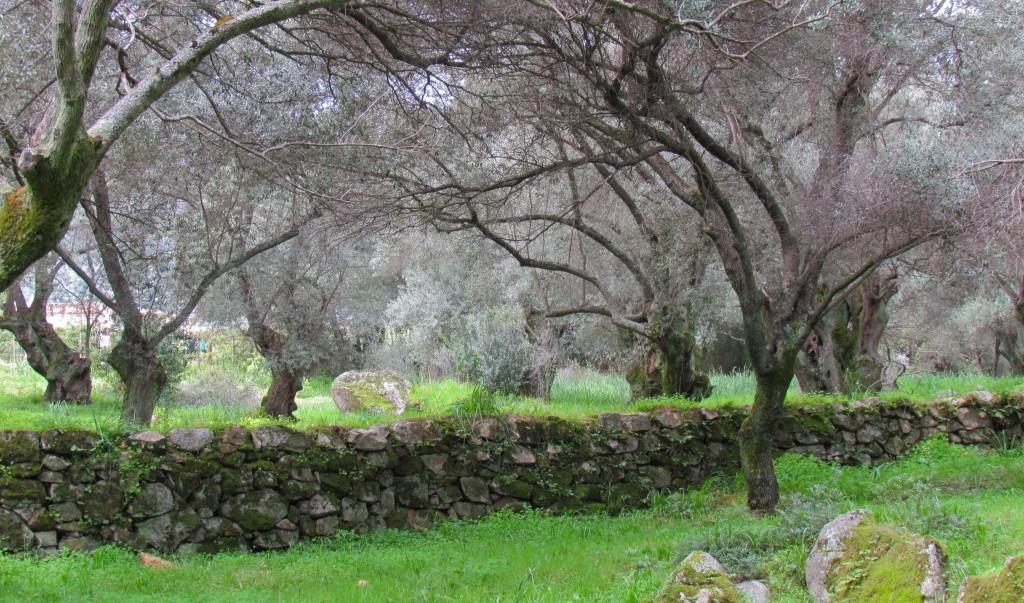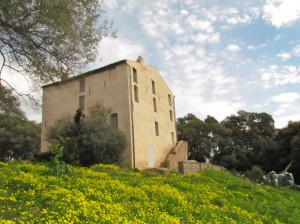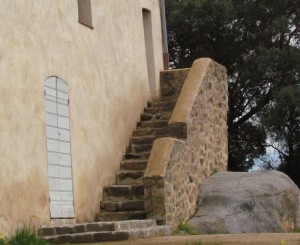 The Bonaparte’s country house in Milelli is less famous than the Ajaccio residence but to me more telling. Located in the hills above Ajaccio, it sits among rich olive trees, many old enough for Napoleon to have known them. Here, the family came in the summer months, fleeing the heat and mosquitoes of the coastline. Away from the narrow town streets, the children could run free, catching lizards, chasing chickens, and perhaps, playing king of the rock on the boulder jutting out from under the stairs.
The Bonaparte’s country house in Milelli is less famous than the Ajaccio residence but to me more telling. Located in the hills above Ajaccio, it sits among rich olive trees, many old enough for Napoleon to have known them. Here, the family came in the summer months, fleeing the heat and mosquitoes of the coastline. Away from the narrow town streets, the children could run free, catching lizards, chasing chickens, and perhaps, playing king of the rock on the boulder jutting out from under the stairs.
 The building’s rectangular shape and plain outside is typical Genoese style of the time. The windowless first floor served as a storeroom and probably contained an olive press. A year’s harvest supplied oil and olives for the Bonapartes and their extended family; they bartered the excess for meat, flour or other goods their own lands didn’t produce. The house is empty and closed to visitors, but I wandered the orchards and climbed the steps to peer at the original wood lintel over the door.
The building’s rectangular shape and plain outside is typical Genoese style of the time. The windowless first floor served as a storeroom and probably contained an olive press. A year’s harvest supplied oil and olives for the Bonapartes and their extended family; they bartered the excess for meat, flour or other goods their own lands didn’t produce. The house is empty and closed to visitors, but I wandered the orchards and climbed the steps to peer at the original wood lintel over the door.
 Common legend claims Napoleon grew up in poverty, yet neither the town home or this country place support that. When Napoleon was born, the structure in Ajaccio had just two stories to house a large extended family. Napoleon would have witnessed, throughout his youth, the house’s expansion through his relatives’ clever marriages and his father’s risky ventures. The family never had much cash available, but then in many ways, Corsica was not a cash economy. Instead, Napoleon grew up fed on produce from his family’s property. Years later, on St Helena, he proudly claimed they had never needed to buy food.
Common legend claims Napoleon grew up in poverty, yet neither the town home or this country place support that. When Napoleon was born, the structure in Ajaccio had just two stories to house a large extended family. Napoleon would have witnessed, throughout his youth, the house’s expansion through his relatives’ clever marriages and his father’s risky ventures. The family never had much cash available, but then in many ways, Corsica was not a cash economy. Instead, Napoleon grew up fed on produce from his family’s property. Years later, on St Helena, he proudly claimed they had never needed to buy food.

Lovely photos. The landscape must have looked very much like that, all those years ago.
Yes, the property at Milelli, surrounded by its gnarled silver-leaved olive trees, felt haunted. I actually knocked on the ancient sealed door, hoping a Bonaparte might answer.